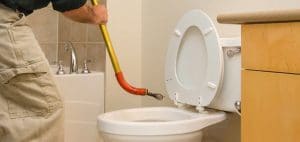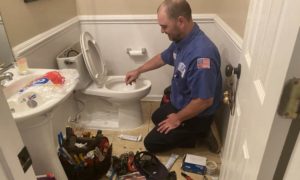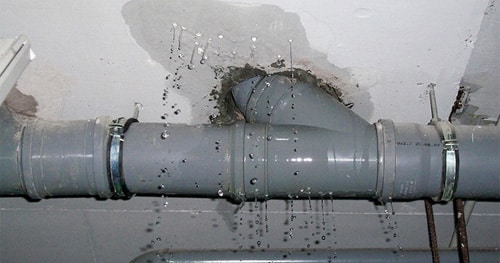
A frequent issue that can cause water damage and expensive water bills is a leak in the toilet supply line. How to locate and fix a leak in the toilet supply line will be discussed in this article.
The key recommendations include shutting off the water supply, checking the supply line and connections, tightening loose connections, changing out broken supply lines, and checking for leaks. You can correct the leak and avoid further problems by following these instructions.

The pipe that carries fresh, clean water from the main water supply of the house into the toilet bowl and tank is known as the toilet water supply line. This lets you flush and replenish as necessary without being concerned about wasting water or manually refilling it.
Your water supply line is that pipe that runs from your toilet to the wall, in case you ever wondered what it was. Water cannot exit the toilet; it can only flow into the toilet.
The drain for your toilet is located on the bathroom floor, beneath the bowl, and it will carry the waste away. It is therefore improbable that would result in a leak near the back of your toilet.
The shut-off valve for your toilet is located in the same place as the water supply pipe. When changing it or performing other toilet maintenance, you can use this to empty the bowl and work in the tank.
The water supply should be permanently switched off after turning the shutoff valve until resistance is felt. This will be useful when it comes time to fix your leak. However, how can you tell if you have one at all? We will show you how to check for toilet leaks shortly.
If your toilet connection hose ages and begins to deteriorate from rust or old age, it may leak. Whilst they won’t corrode in the same way as metal hoses, plastic hoses will nevertheless eventually wear out.
If your toilet’s water supply valve doesn’t have a tight or threaded connection, it could also leak. The connectors might need to be changed or the connection tightened. Moreover, the internal O-ring may just be broken or absent.
If the hose sustains damage that results in a hole in it, it may occasionally leak. Whether sweeping, mopping, or cleaning, they occasionally get kicked or dragged.
There are various causes of a leaking water supply line. Replacing the entire line or the entire toilet is the most practical option to fix a leaky toilet supply line.
This method might be the quickest, but it might also result in unnecessary spending of money. Here are some steps you may take to fix a leaky line rather than purchasing and installing a brand-new one.
A supply line for a toilet has four potential sites to leak. It can be challenging to locate the source of the leak in some circumstances. Water from the storage tank may be dripping and running down the supply line, giving the impression that the supply line or valve is the problem.
We will begin at the top and work our way down to the leak in order to detect it because leaks can be deceiving as water flows downward. Older bathrooms may have rusted or corroded components as well as aged brass lines.
When you tighten them, you risk further damage to the bolts or perhaps total toilet or tank damage. To find the problem, we’ll start at the toilet and work our way back to the wall. To identify the drippy spot, use your finger and a thoroughly dry rag.
A toilet needs routine repair because of normal wear and tear. One of the biggest bathroom annoyances is a toilet that either runs on its own or after you flush it. You should address this issue as soon as you can because, if left unattended, it could increase your water cost.
Usually, the fill tank is where these issues originate. The level of the water may be the first problem. If the water level is higher than the overflow pipe, either the fill valve or ball cock is malfunctioning or has been installed at the incorrect height.
The proper level is typically stamped inside the tank, so make sure to change the water level in accordance with those guidelines.
You may be able to unscrew the fill valve and swap out the internal diaphragm seal if it is worn. Certain fill valves are beyond repair, and in those cases, the whole valve needs to be replaced.
Check the flapper as well. The flapper will repeatedly open the fill valve to refuel the tank if it is leaking. Here is a straightforward test to detect if the flapper is leaking:
Check the area around the flapper for any accumulations of sediment, debris or odor. The leak might be set by cleaning it. Replace the leaky toilet flapper if there is no sediment or the leak still exists after cleaning. Usually, replacing this is far less expensive and simpler than replacing the fill valve.
Resolving the problem is the major consideration among many others. To achieve long-term efficacy, you must, however, tackle the underlying problem.
Let me share with you a short insider tip: double-check your washer fittings.
The shutoff valve must be opened in order to turn off the water. Your sized washers should now be visible if you remove the hose from the supply line and, of course, the toilet tank connection point.
To finish, take out and reinstall the washers.

When you discover leaks in the toilet supply line, you must immediately take some quick actions. We’ll take you through each step one after the other, from resolving the problem to adding a new component.
You will need the help of some needed equipment to be able to pull this off: a curved adjustable wrench, a container to store water in case the supply line is cut, and a dry rag.
Before you start, turn the shutoff valve at the back of the toilet. Before starting anything, is advisable to turn off the main water shut-off valve to the house to be safe, especially if you intend to remove the complete toilet water supply line.
Troubleshooting to determine if the component has to be changed is the first step in correcting the leak. We already mentioned that a leak can be triggered by loose fittings or washers. If so, the problem might just be resolved by tightening them.
You can try tightening all of the fittings with your wrench, taking everything apart to inspect it, and then putting it back together to check if it resolves the issue. If the leak has been repaired, please turn the water back on. It only required a slight retightening.
It would be simple to repair any washers or damaged pipe after disassembling your water supply line. You can take the damaged part to your neighborhood hardware store to get a replacement.
You can be sure you’ll obtain the proper size and component for your particular toilet by bringing the part with you. It’s better to be cautious than sorry for the fact that a few of them don’t meet the standard.
Reassemble your water supply line using the new component when you reach home. Restart the water supply after that and look for the leak once more. You’ve successfully remedied the leak if you flush the toilet and the leak disappears.
One of the easiest DIY plumbing projects you can complete around the house is fixing a leak in your toilet’s water supply line. All that’s required is some basic problem-solving skills, the ability to wield a wrench safely, and the patience to patiently search for the leak.
Though it’s an easy fix, some people might have a supply line for the toilet that’s difficult to reach or lack the necessary DIY skills to do the work. No matter how big or little the project, our crew at 5-star plumbing is skilled in it.
Without any bother for you, we can quickly remedy the leak. Simply use our online form or phone us (916) 796-1233, and we’ll arrange a comfortable time to provide your free estimate.
Look for water accumulating at the base of the toilet or on the floor close by to determine if your toilet has a supply line leak. A whistling or hissing noise emanating from the toilet tank is another clue that water is dripping into the tank from the supply line.
Look for water accumulating at the base of the toilet or on the floor close by to determine if your toilet has a supply line leak. A whistling or hissing noise emanating from the toilet tank is another clue that water is dripping into the tank from the supply line.
Toilet water supply lines exist in a variety of lengths, materials, and connecting styles thus they are not all the same. To be sure it fits and to avoid leaks, it’s crucial to choose a suitable supply line that adheres to the standards of your toilet.
You will need a few simple equipment, such as adjustable pliers, a basin wrench to tighten valve nut, and a plumber’s tape, to fix a leaky toilet supply line. In the event that the current supply line is too damaged to be repaired, you could also need to buy a replacement.
Read more: How Much Do Plumbers Cost To Fix A Toilet?
Mike Joshua, a 33-year-old plumber based in California. With a passion for solving complex problems and a commitment to his trade, Mike has dedicated the past 8 years of his life to honing his skills as a professional plumber. After completing technical college Mike quickly secured a job in a plumbing company and has been working steadily ever since. Mike's experience includes not only households but industrial gas and plumbing systems and installation, repair the equipment for different types of business He is known for his attention to detail, strong work ethic, and ability to complete projects on time and within budget. He is always striving to improve his skills and stay up-to-date with the latest industry developments and advancements. In conclusion, Mike enjoys outdoor activities such as hiking and camping. He also has a passion for DIY projects around the home and is always looking for new challenges to tackle.

